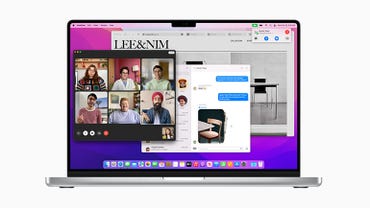
Apple MacOS Monterey (12.0.1) review: Productivity firmly back on the menu
[ad_1]
Like
- AirPlay to Mac
- Time-saving tab controls in Safari
- Improved automation via Shortcuts app
Don’t Like
- Universal Control has gone AWOL
- Some features only available on Apple Silicon Macs
Apple’s Worldwide Developer Conference (WWDC) was particularly eventful this year, with an increased focus on services and areas such as health and fitness, along with the usual software upgrades that normally dominate the developer-focused event. In among all these announcements, MacOS — once the sole raison d’être of WWDC — merited barely 10 minutes out of the opening 100-minute keynote.
That’s a little misleading, though, as many of the new features in MacOS 12 — codenamed Monterey — are focused on apps such as FaceTime and Notes, which the Mac shares with the iPhone and iPad. Many new features, such as Quick Notes and improved controls for video calls in FaceTime, were covered during the iOS section of the keynote, as were the new ‘focus’ features for reducing distraction while working on your Mac or iPad during the day.
This did at least mean that the time devoted to Monterey during the keynote could focus on a key group of new features that will have Mac users eager to download Monterey, which was made available to the public as a free upgrade on October 26.
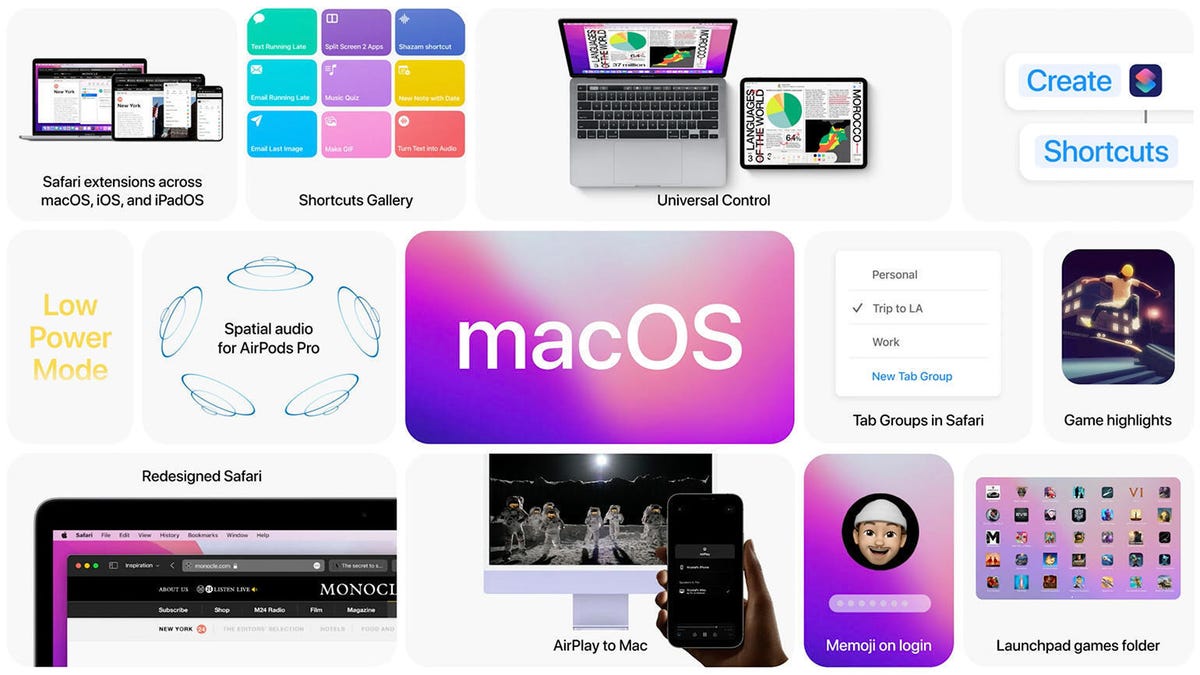
A summary of the key new features in Apple’s MacOS 12 (Monterey).
Image: Apple
Taking back control
A beta version of Monterey has been available for several months, and it was clear during the beta that some features were proving somewhat troublesome. The headline-grabber during the WWDC presentation was Universal Control, which allows you to control multiple Apple devices — such as a desktop Mac, a MacBook laptop and an iPad – with a single mouse (or trackpad) and keyboard.
This was particularly appealing to professional and creative users, who would be able to quickly switch between a desktop Mac, a laptop or an iPad while working, especially as Universal Control also allows you to drag and drop files between devices too.
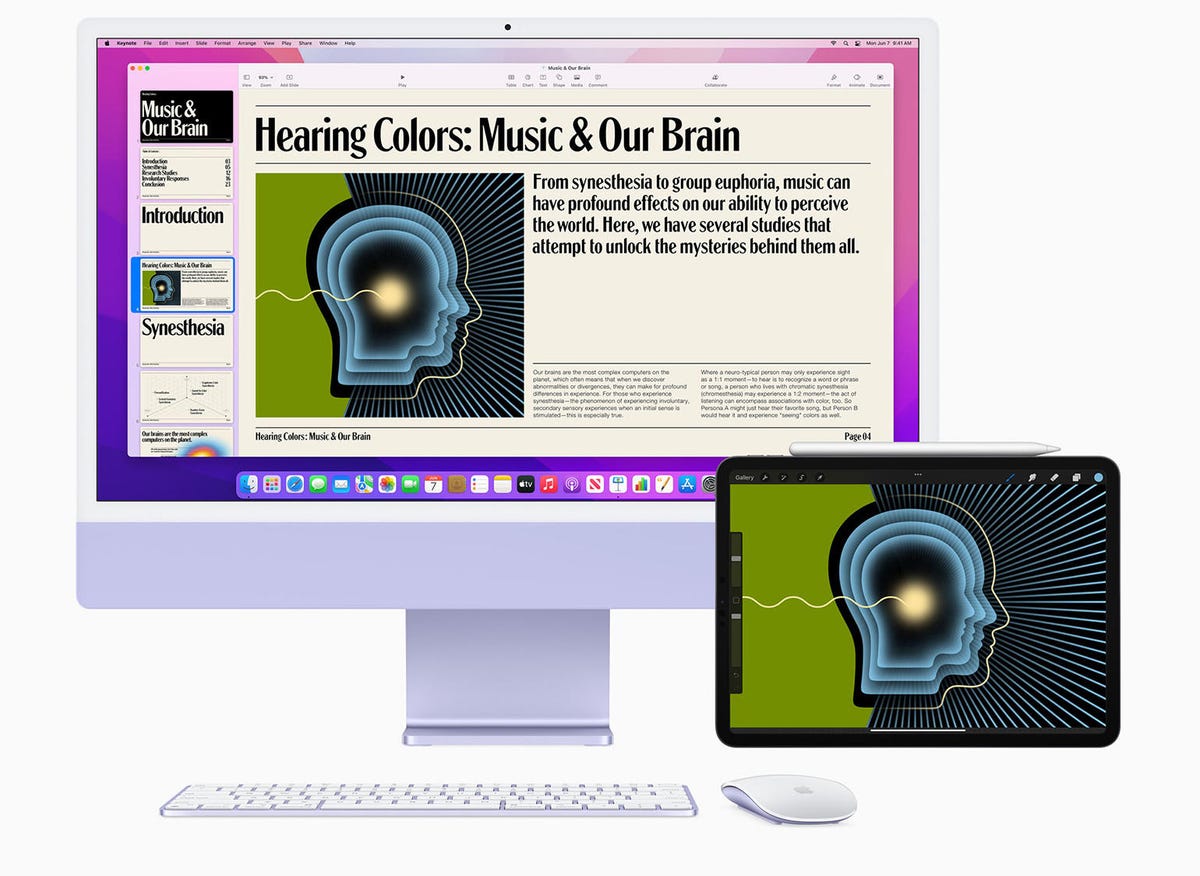
Universal Control will — in due course — allow you to work across Apple devices, launching and controlling apps, and dragging and dropping files.
Image: Apple
However, Universal Control wasn’t available during the beta test phase, and Apple has now confirmed that both Universal Control and the SharePlay features for sharing video calls in FaceTime have been delayed until “later this fall”.
It’s also worth noting that several features – including the new Portrait mode for the Camera and FaceTime apps — only run on Macs that use Apple’s home-grown M1 SoCs. That’s a trend that will probably continue with future versions of MacOS, as Apple completes the transition from Intel processors to its own Apple Silicon across the entire Mac range.
AirPlay To Mac
The absence of Universal Control is disappointing, but the long list of new features included in Monterey does seem to be largely complete. And since many of those features are already available in iOS 15 and iPadOS 15, they’ve had some running-in time to ensure that they work smoothly and reliably.
Another new feature that grabbed the attention of many professional users was AirPlay to Mac, which allows an iPhone or iPad running iOS 15 or iPadOS 15 to stream its display to a Mac’s larger screen. Not only does AirPlay to Mac work smoothly, but I’m pleased to find that it works better than expected.
You can stream a presentation to your Mac, or use a stylus to sketch on the screen of an iPad while viewing your work on the larger Mac display. However, I also discovered that I could stream video from one app, such as the BBC iPlayer, to the screen of my office iMac, and then switch to another app on the iPad to check my emails, browse the web or create a new document in Pages — with video output from the iPlayer app continuing to play on the iMac.
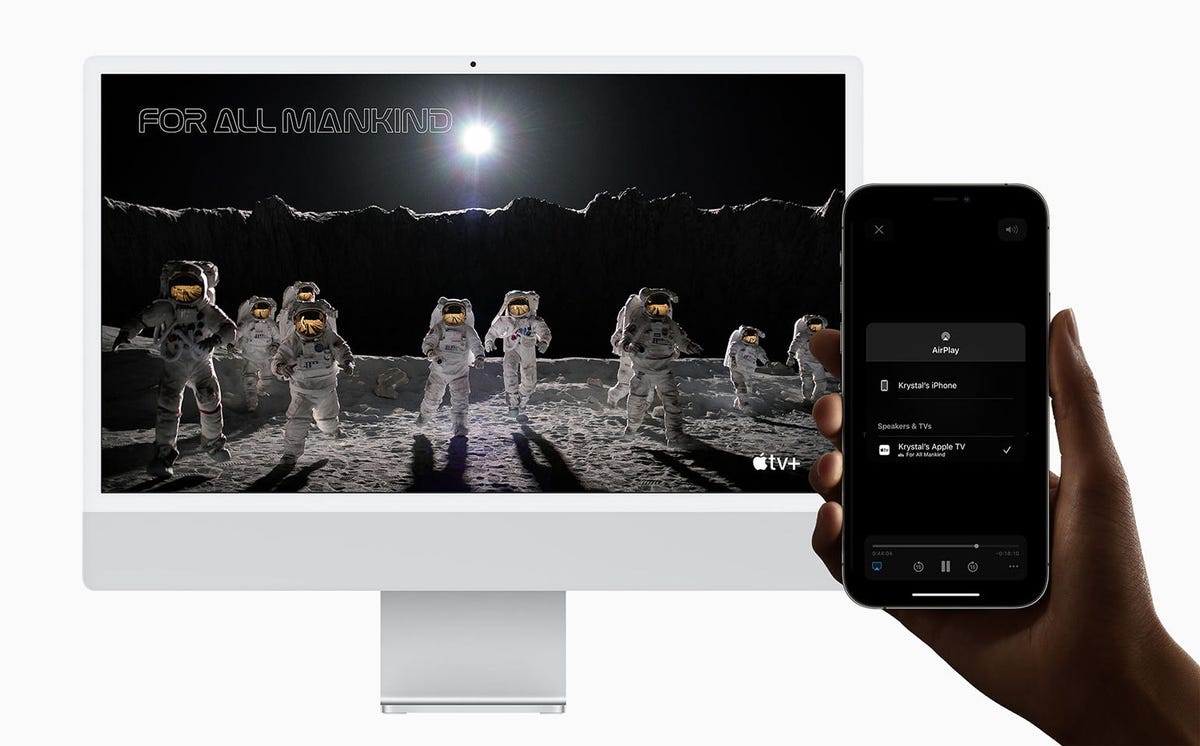
AirPlay to Mac: streaming AV content from Apple devices to an iMac’s display.
Image: Apple
This AirPlay streaming only works with devices that are on the same network and signed into the same AppleID, but business users who are concerned about security can completely deactivate this feature on the Mac, using the AirPlay Receiver option in the Mac’s Sharing Preferences panel.
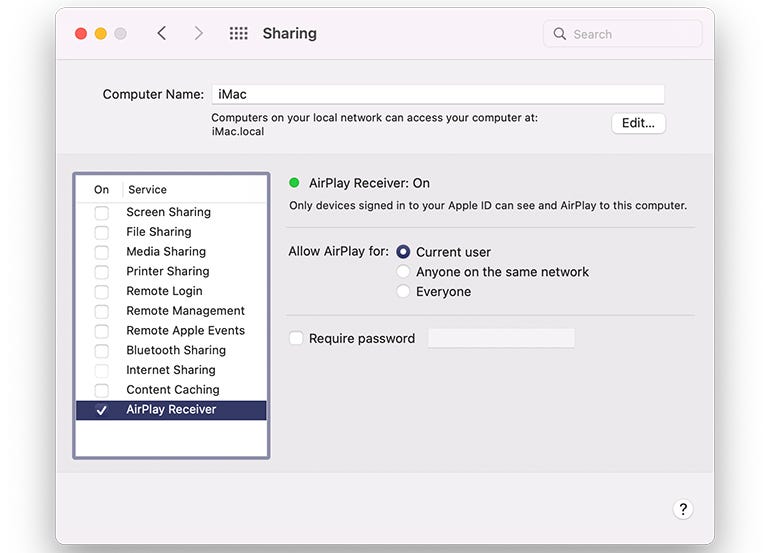
You can disable AirPlay to Mac by unchecking the AirPlay Receiver box.
Image: Cliff Joseph / ZDNet
Mind you, AirPlay to Mac did remind me of the old Target Display Mode that provided a similar feature for iMacs — albeit via a wired connection — until it was frustratingly removed by Apple almost a decade ago.
I felt a similar moment of nostalgia with the new Shortcuts app for the Mac, which has been now been brought to the Mac from iOS. Designed as a replacement for the Mac’s Automator app, the Shortcuts app had me thinking wistfully of the glory days of Hypercard (look it up…), which helped many budding young programmers get started back in the ’80s and ’90s.
The Shortcuts app worked fine in the beta version of Monterey, although it didn’t include many ready-made Shortcuts to help people get started. Thankfully, the final version of the app now includes an extensive gallery of shortcuts covering a wide range of tasks, from setting a timer for your toothbrush routine, to scheduling meetings and video calls, and improving accessibility.
Tab handling in Safari
For many people, though, the single most welcome feature in Monterey could be the improved handling of tabs in the Safari web browser, and its ability to create Tab Groups that can instantly show or hide a collection of tabs. However, the initial response to these new tab features in the Monterey beta was poor, with many people complaining about the visual appearance and location of the new tabs. The tab features subsequently went through a series of modifications during the beta phase, before settling on what seems to be their final form.
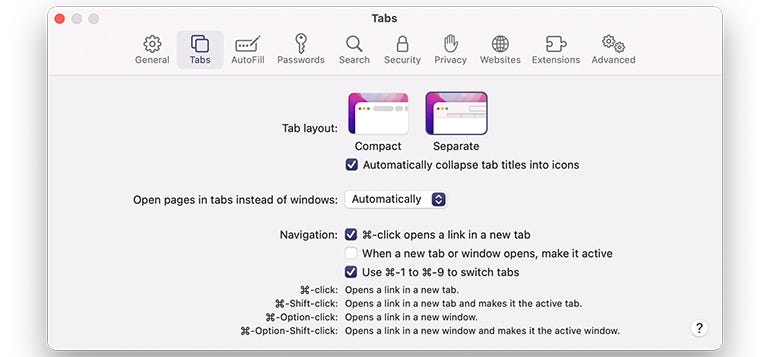
Tab controls for Safari in MacOS Monterey: the default setting is Separate.
Image: Cliff Joseph / ZDNet
Apple’s original plan was to move tabs into the main address bar, and to use smaller tabs with rounded corners (Apple’s current eye-candy fad). The address bar also changed colour to match the background colour of the current web page. That didn’t go down too well, so during the beta phase Apple brought back the traditional tab design with a separate tab bar — and eventually just decided to provide both options so that people could make up their own mind.
By default, Safari will use the more traditional Separate style, while the new Compact style with rounded tabs in the address bar can be chosen from Safari’s Preferences/Tabs panel.
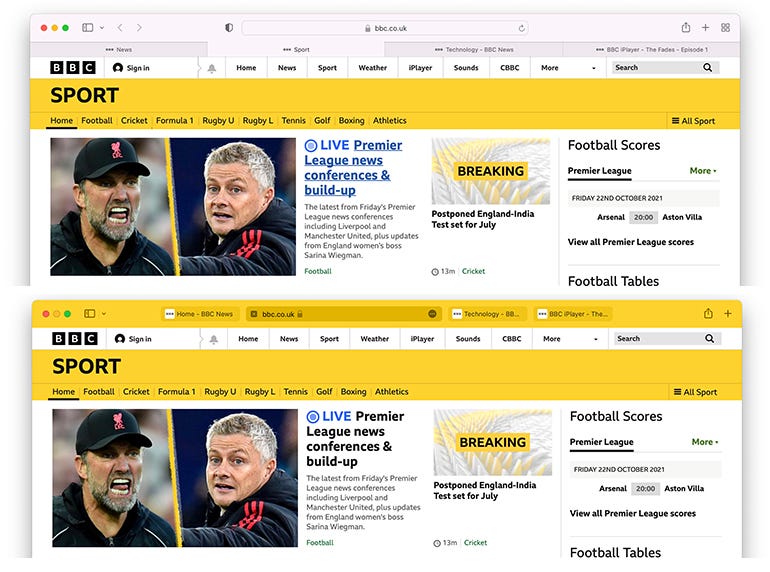
Separate (top) and Compact (above) tabs in Safari.
Images: Cliff Joseph / ZDNet
In addition to this cosmetic change, Safari now also allows you to save multiple tabs as a Tab Group. You can close an entire tab group to unclutter your screen, and then open the group again whenever you need to simply by selecting it from the new pull-down menu that sits in the address bar.

Safari’s Tab Group pull-down menu.
Image: Apple
This is a godsend for me, as I tend to have multiple browser windows open while I’m working, with each window bulging with its own collection of tabs. The ability to tidy all those windows and tabs into groups and then instantly retrieve each group from a menu — or to manage them in more detail in Safari’s Sidebar view — will be a huge time-saver for me and many other Mac users.
It’s worth noting, though, that Tab Groups are also available in the standalone version of Safari 15.0, which is available for older versions of MacOS, going back to Catalina (2019).
My only complaint is that creating and saving new Tab Groups doesn’t seem immediately intuitive. I’ve deleted entire groups of tabs accidently while figuring out how this new feature works, so a little more clarity wouldn’t go amiss there. I think I’ve got it under control now, and the ability to reduce the scattershot mess of tabs and windows on my Mac desktop makes me more eager to install Monterey than any other MacOS update in recent years.
Conclusions
Many Mac users felt that last year’s Big Sur update left the Mac playing second fiddle to the iPad, but Monterey manages to restore the Mac to its central role as your primary work tool, while also embracing your mobile devices as useful collaborators.
There’s a little egg-on-face due to the non-appearance of Universal Control, but features such as AirPlay To Mac, the new Shortcuts app, and Safari’s improved tab controls will quickly be adopted and used on a daily basis. And while Big Sur sometimes seemed more concerned with its candy-coloured icons, Monterey might just be the most productivity-focused upgrade that MacOS has had in a long time.
RECENT AND RELATED CONTENT
Apple MacOS Monterey: Hands on with the public beta
Apple MacOS Big Sur preview: The look-and-feel of Macs to come
Will your Mac run MacOS Monterey? Check your hardware compatibility
Apple’s presentation was ugly. But it hid something very useful
Intel-powered Macs won’t get some new MacOS Monterey features
Hands on with the new 16-inch M1 Apple MacBook Pro
Read more reviews
[ad_2]
Source link





